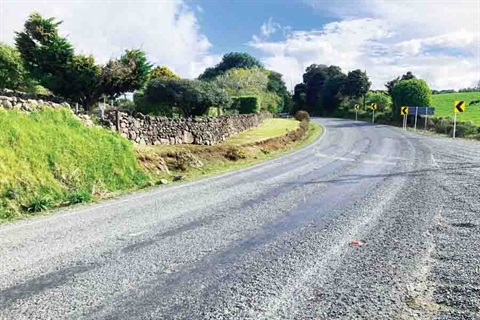Solving seal woes
Published on 23 October 2024

Fulton Hogan, our northern district maintenance contractor, has analysed patches of stripped chips at resealing sites from last summer and reported back to us.
The study showed that nothing has changed in terms of the materials used or the way they were applied but highlighted that the timing of the resealing work significantly affected the results in some areas.
Last season, workloads meant several sites were completed later than intended. While summer conditions are ideal, the demands of high-priority road maintenance sometimes extend resealing into cooler periods. This approach balances competing priorities within the available budget and timeframe.
Summer offers the best conditions for sealing, with warm, dry weather, longer days and higher overnight temperatures, all of which help the seal and chips cure into a durable surface.
When done under these conditions, the seal can take months to fully cure, allowing the stone chips to interlock and form a stable surface to protect the pavement from water.
Resealing late in the season faces challenges. Lower sun angles mean more shaded road surfaces, which, along with colder day and overnight temperatures and increased rainfall, slows down the curing process.
The surface can then become vulnerable to damage from traffic before it fully cures. Loose chips dislodge more easily, leading to the growth of shiny stripped patches with rough edges.
Remedial work is continuing this summer, when the weather allows the best remedy. Fulton Hogan and Whangarei District Council remain committed to continuous improvement, regularly updating processes to prevent similar problems in future resealing programmes.